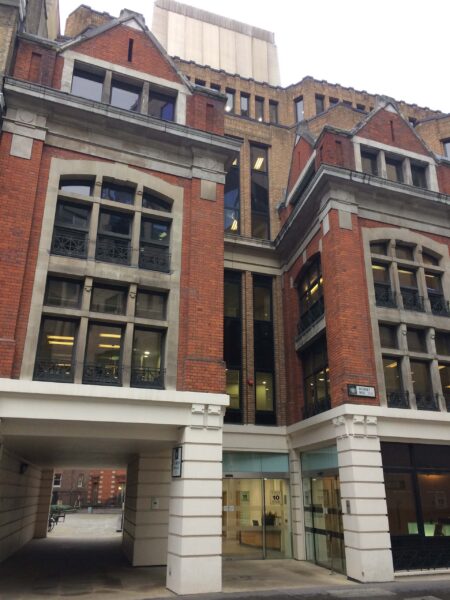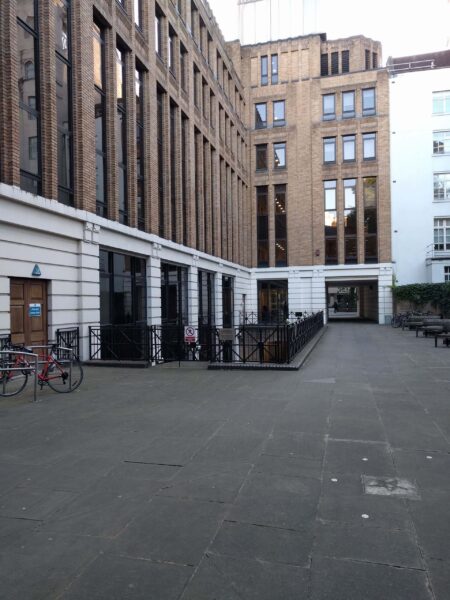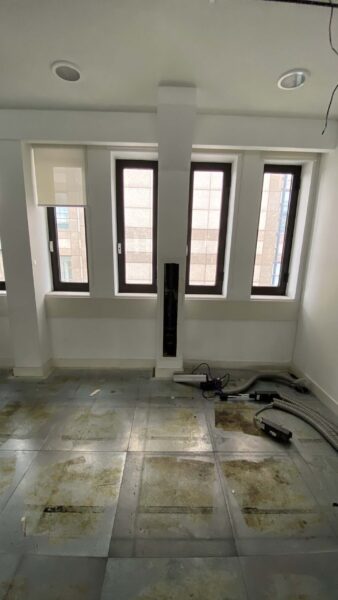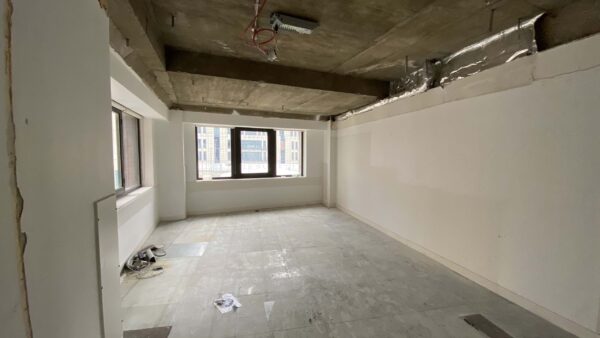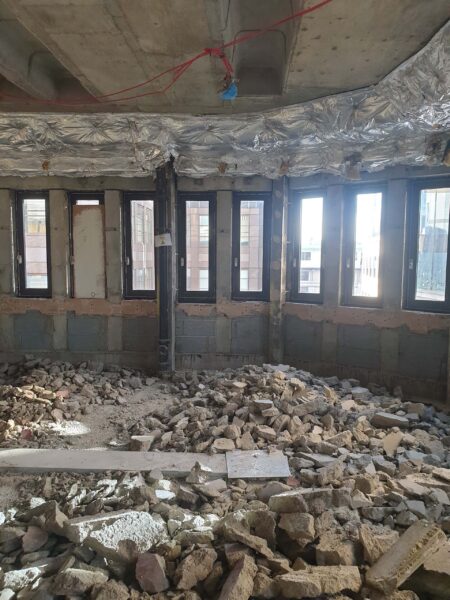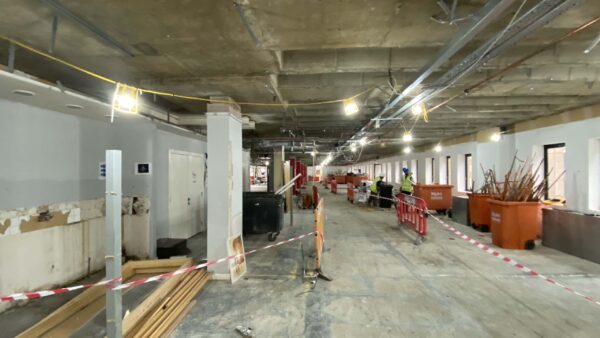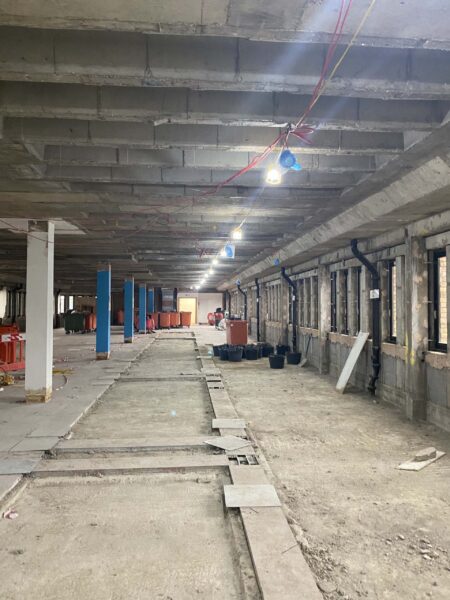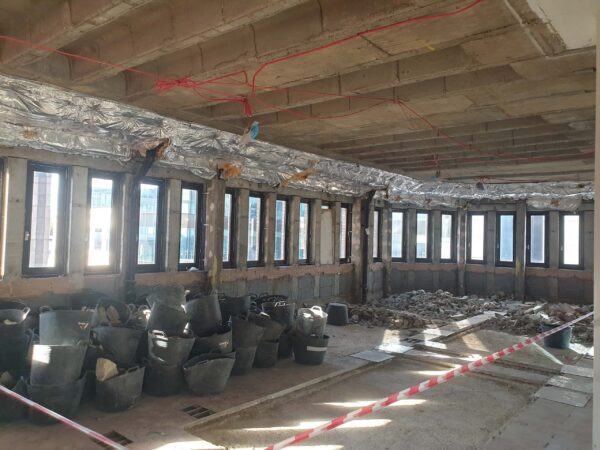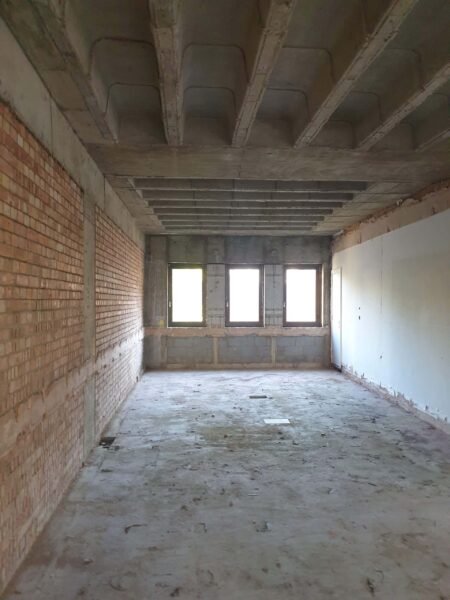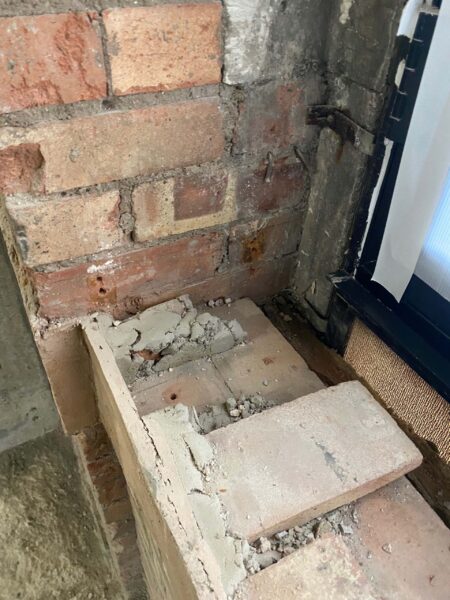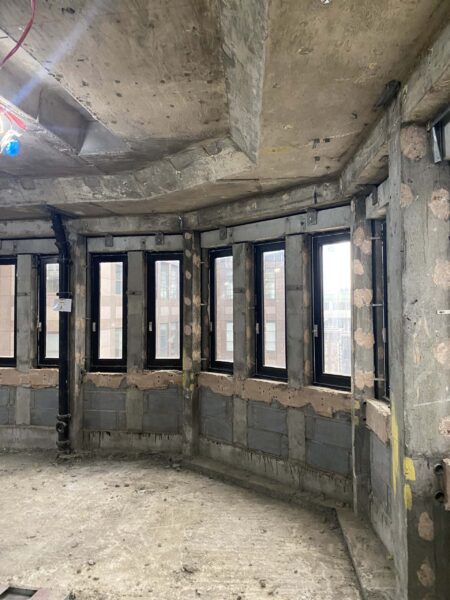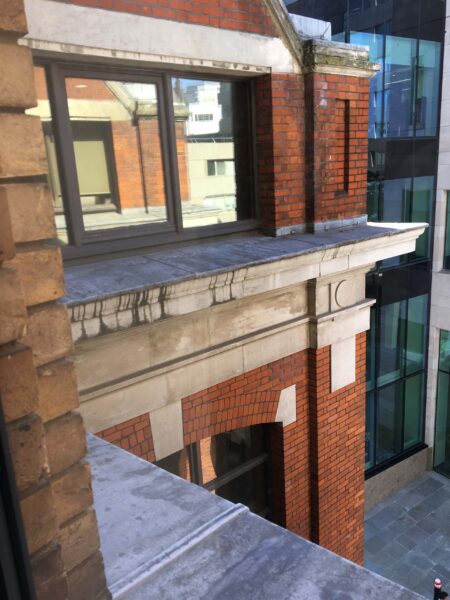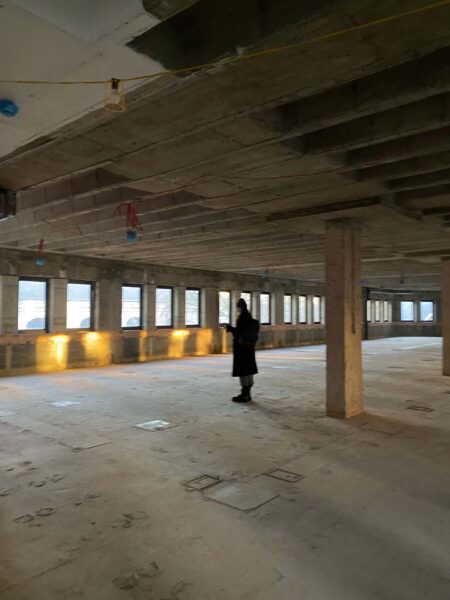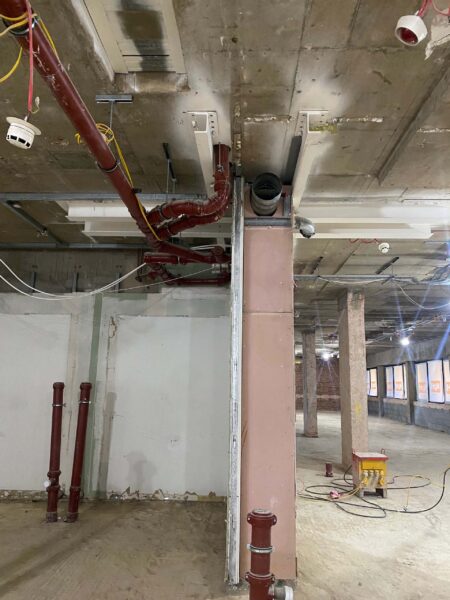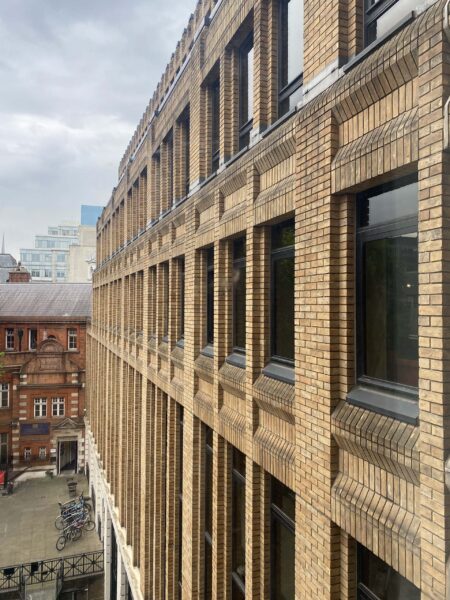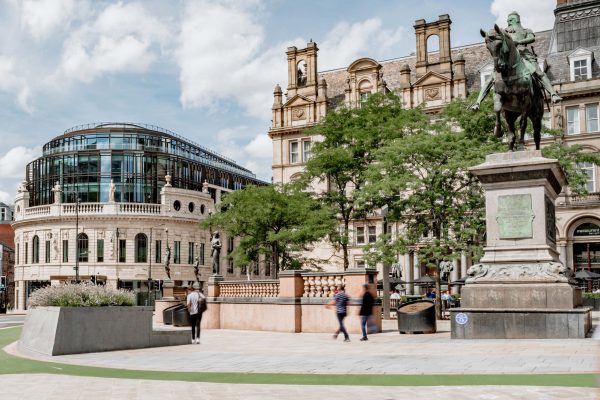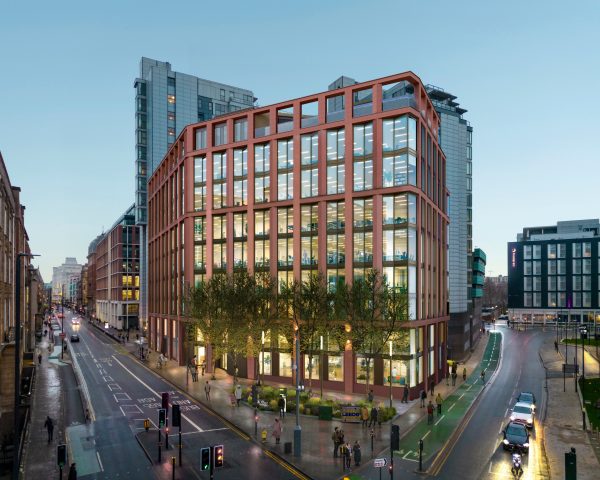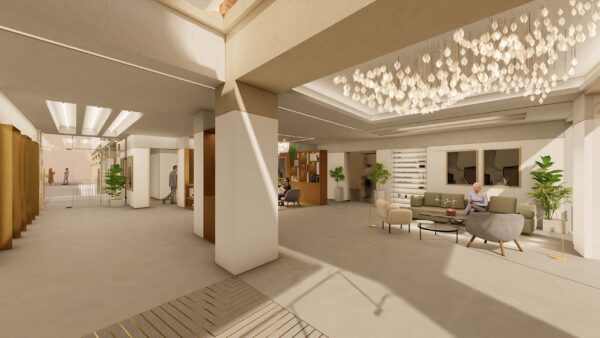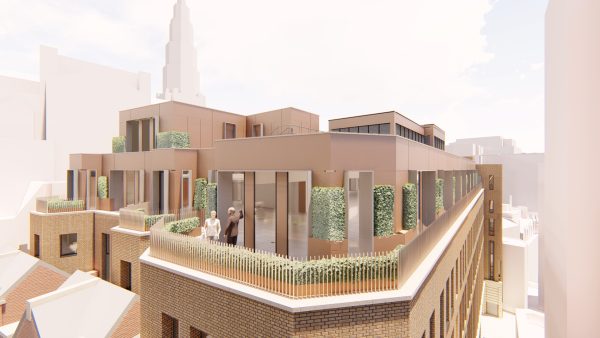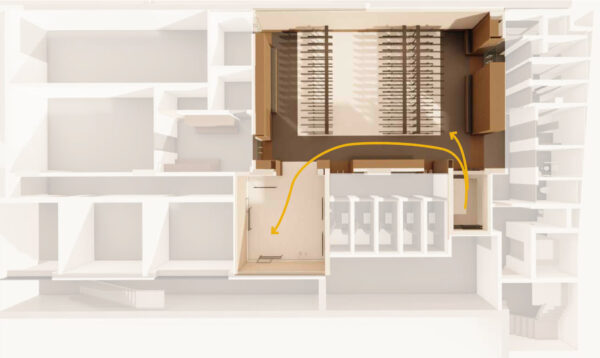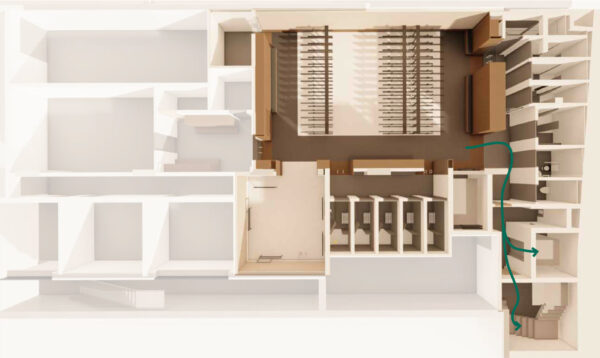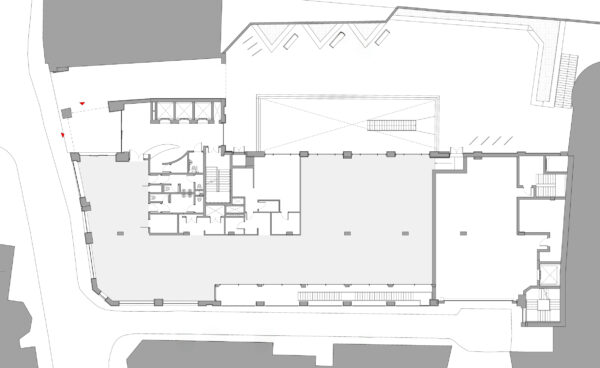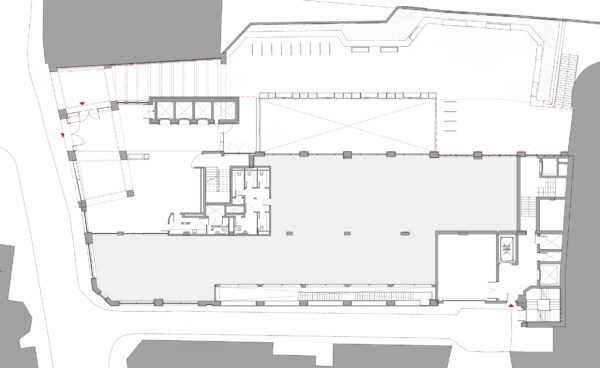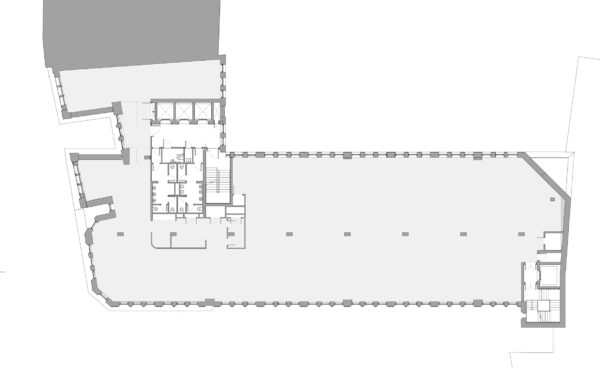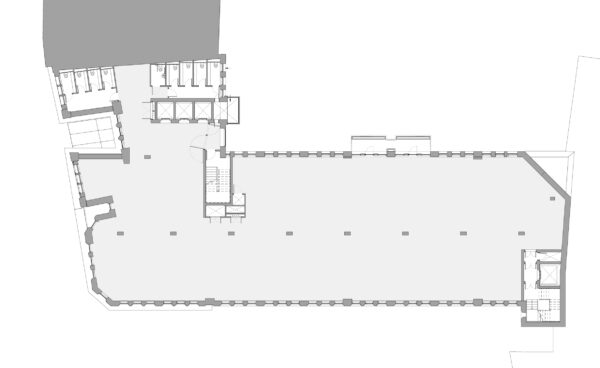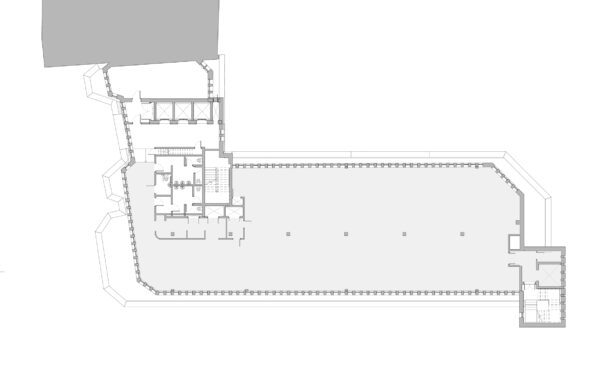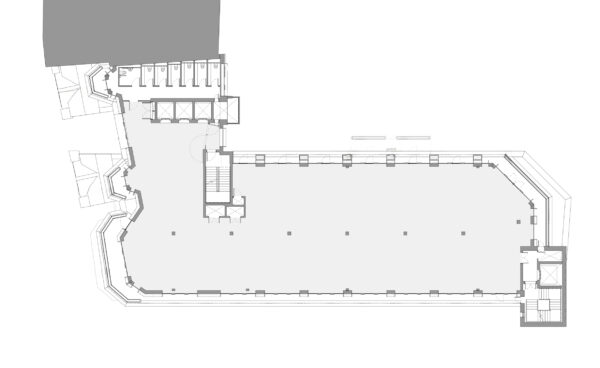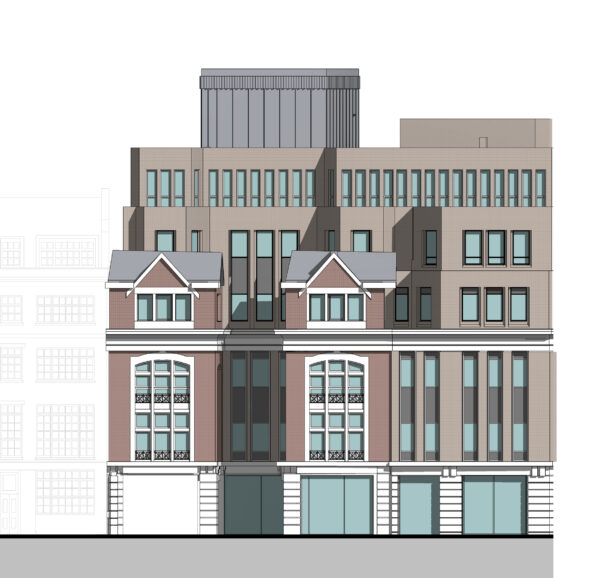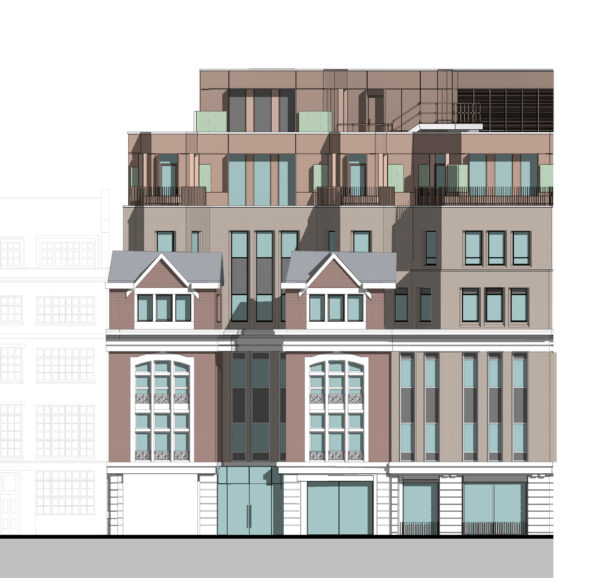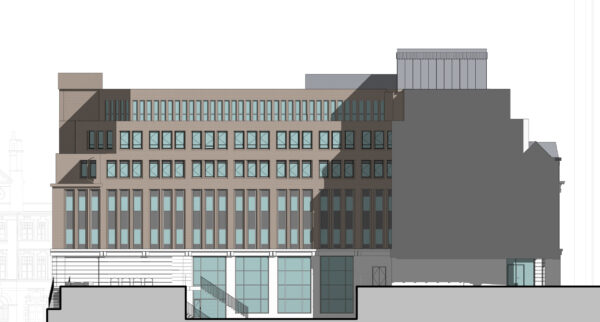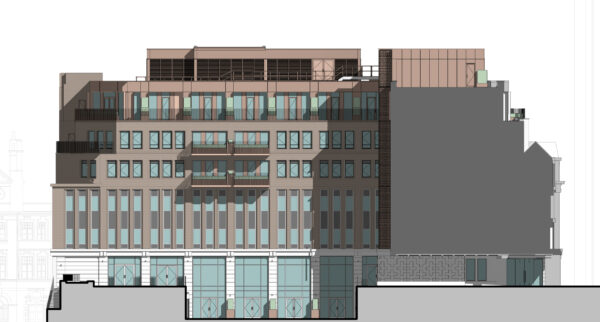St Bride’s House
A new layer in history
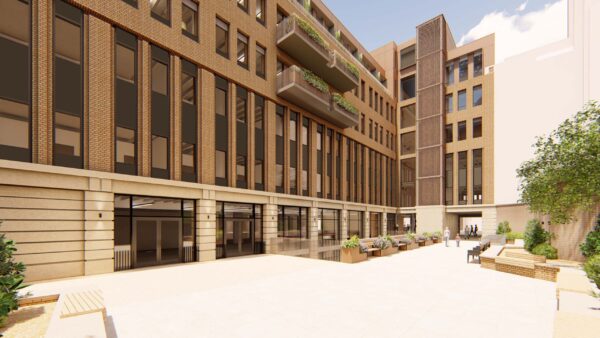

01 Introduction
The refurbishment and extension of a unique commercial building on Salisbury Square, off Fleet Street, overlooking St. Bride's Church.
St. Bride’s House is located on a richly layered urban site with decades of development and redevelopment in its past. It is now primed for another chapter in its story, it’s wholesale redevelopment to meet today’s highest workplace standards.
Our scheme exposes unique elements of the existing structure while modernising the building for the next generation. By creating a welcoming reception, improving thermal efficiency, and maximising natural light, we aim to drastically improve the experience for all those who interact with the building and its surrounding public realm.
We propose to relocate services and enhance ceiling heights to improve the quality of the internal spaces. The design includes access to new outdoor spaces, and a lightweight roof extension with 360-degree terracing, blending the existing structure’s geometry with local heritage influences for a new midtown aesthetic.
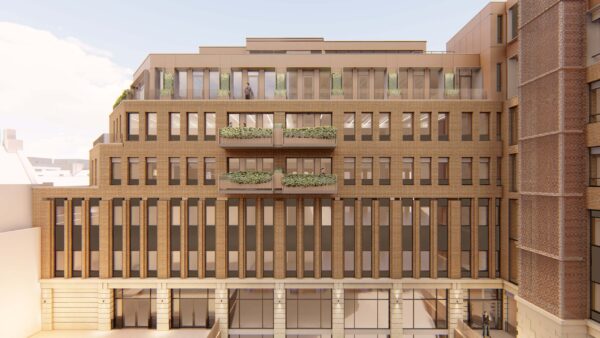
02 Site History
Working with an existing building in the Fleet Street Conservation Area.
St Bride’s House is situated in the Fleet Street Conservation Area in the City of London. Built in 1982, it served as speculative office space and absorbed historic facade elements from two earlier buildings dating back to 1908-1910. Although not officially listed, its elevation facing Salisbury Square holds local heritage interest. These gatehouse buildings originally flanked the former St Bride’s Passage, which was relocated during the site’s redevelopment in the late 20th century.
The area surrounding St Bride’s House is steeped in history. Centred around the iconic St. Bride’s Church, the site itself is known to have been a place of worship for over 2000 years. The church was designed by Sir Christopher Wren and is renowned for its spire, which inspired the ubiquitous tiered wedding cake design. The project site is also neighboured by notable listed buildings, including the former Reuters building by Sir Edward Lutyens and the St. Bride’s Foundation, which houses an extensive collection of letterpress and typography resources.
Uncovering the stories behind these buildings through conversations with the Church and other local groups allowed us to weave elements of local heritage into our building, cementing its relationship with its namesake and location.
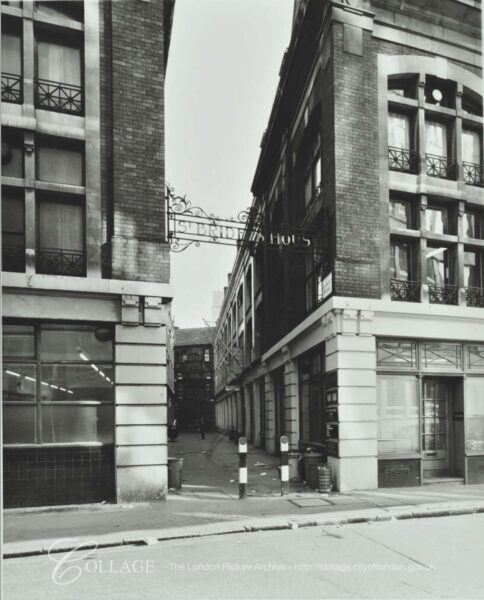
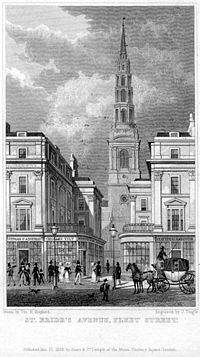
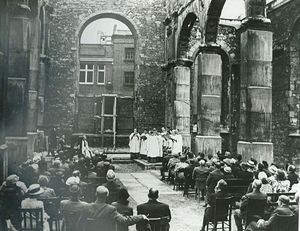
03 Engagement
A collaborative approach
The project team, client, and City of London officers worked together to navigate the intricate relationship between the building and its immediate context.
From a social perspective, our aim was to integrate elements of the area’s history without being pastiche.
Patterns in the Church stone floor inspired the ground floor cast lift core cladding and the six-storey decorative metalwork grilles facing the church. The gloomy passageway under the building is uplifted with bas reliefs telling the story of the 2 millennia of worship next door. The former path of St. Bride’s Passage between the gatehouses is demarcated with a cobble-like pattern in the reception floor. These were established by directly consulting with key figures in the community and discussing how the building can best form a meaningful part of the locality.
From a townscape perspective, retention of the existing building was welcomed by town planners, we worked closely with planning consultants and city heritage officers to establish parameters for an extension to the original building. Iterative testing using 3D modelling and dynamic camera sequences helped establish how reduce our impact on views of the church spire from key viewpoints.
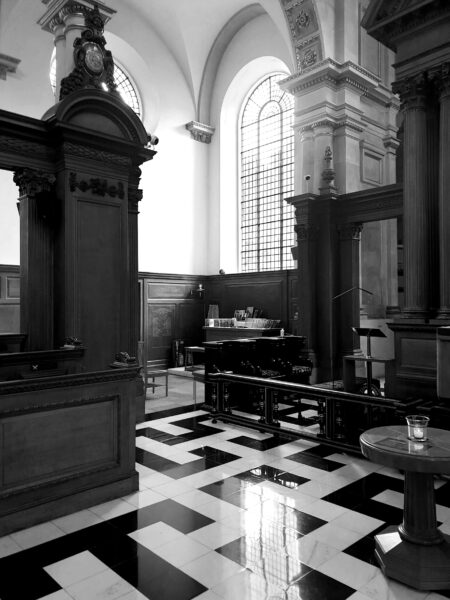
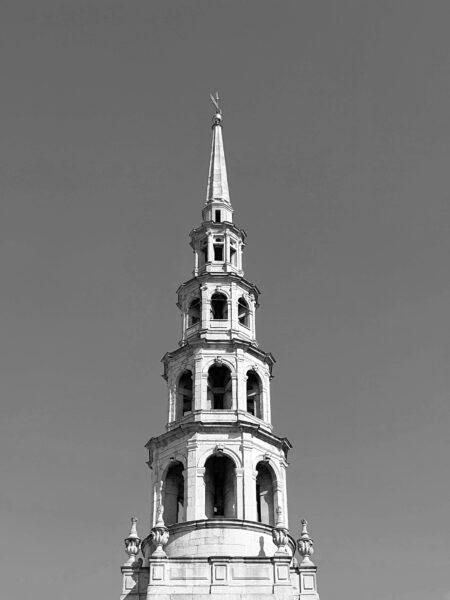
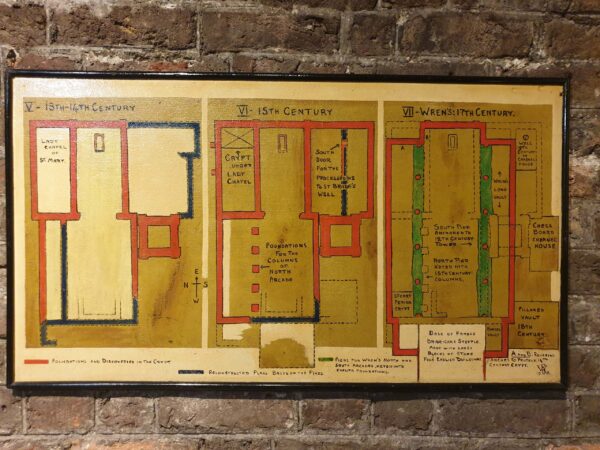
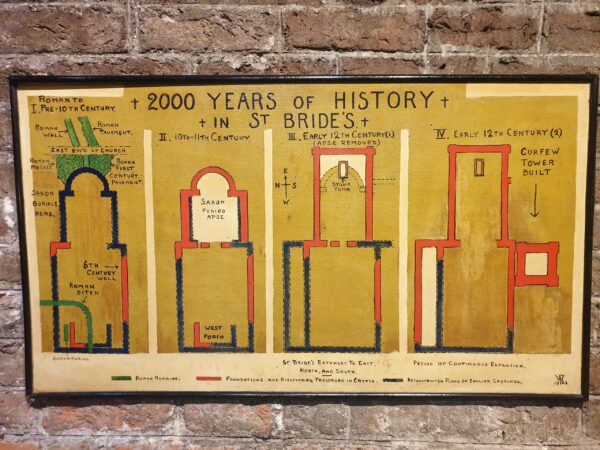
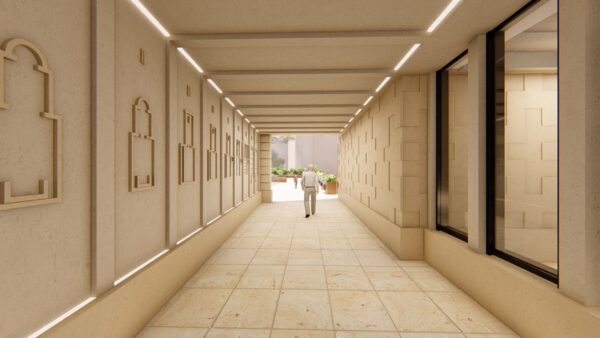
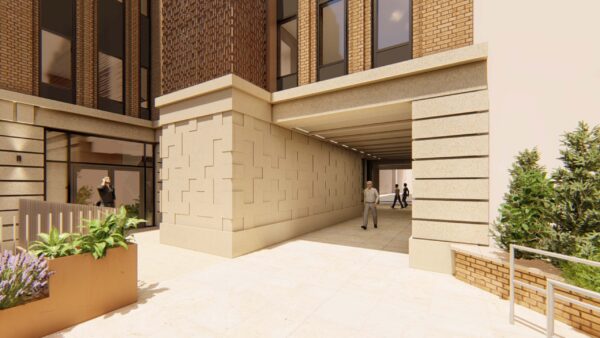
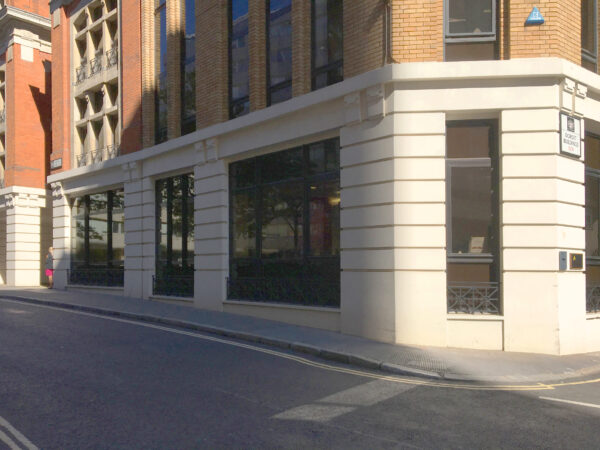
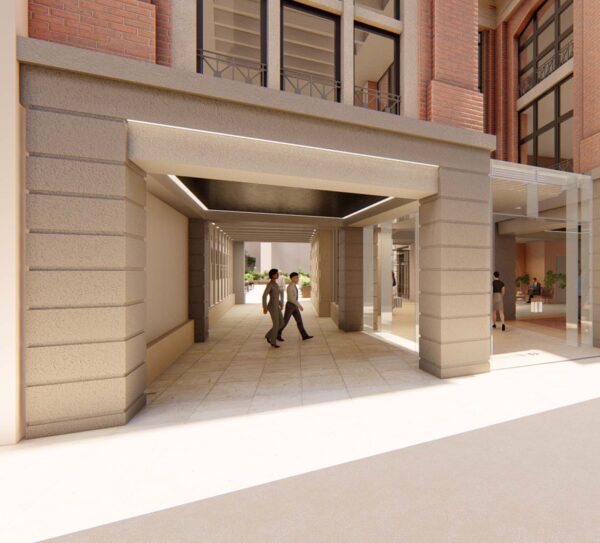
04 Project Narrative
A unique opportunity to upgrade a large-scale commercial asset in the Fleet Stret Conservation Area
St. Bride’s House is the epitome of a richly layered urban site that has been developed and redeveloped over decades. Our responsibility as architects is to steward buildings into their next era (minimising demolition), contributing to a continuous layering process that began long before us and will persist long after. Now, 30 years after its last major reconstruction and nearly 20 years since its most recent refurbishment the site is well primed for revitalisation to suit today’s workplace market.
The projects sustainable goals will ensure the longevity and functionality of our layer on this asset. Environmental upgrades to the fabric, wellness facilities, promotion of low carbon travel, community integration, smart technology, natural light, fresh air, tenanted outdoor space, spatial flexibility, shared amenities, etc. are all provisions (under the broad umbrella of sustainability) that we know bring value to buildings beyond square feet, which we aim to maximise as well.
We are hugely excited to deliver the next piece in the St. Bride’s neighbourhood puzzle.
05 Approach to Design
Respecting the existing building envelope
Key design drivers for the project include maximising floor to ceiling heights and thermally upgrading the entire external envelope. The design will retain, re-use, and recycle building elements while opening up floor plates to create a seamless and exciting arrivals experience on every floor. Although windows will be replaced like-for-like, there is an opportunity to expose and glaze spandrel panels internally to allow more light to enter.
Services and back-of-house functions will be moved to redundant and unwelcoming areas, freeing up quality Net Internal Area (NIA). Ceiling heights will be maximised by removing screeds and exposing or repairing the attractive coffered concrete structural slabs. All floors will provide tenants with access to the outdoors and integrated greening, promoting health and wellbeing.
Collaborating with the City of London, the project will also enhance the courtyard public realm. St Bride’s Passage will feature historically inspired reliefs and improved lighting to provide a better experience for those accessing the courtyard. The building will offer state-of-the-art cyclist and commuter facilities, resembling a health club, complete with a dedicated lift to street level. Additionally, a lightweight roof extension with 360-degree terracing and integrated planting will be designed.
The buildings’ new identity will merge the geometry of the existing structure with influences from the surrounding heritage, reflected in new signage, artwork, and furnishings.
Finally, the exposed structure will be celebrated in a new midtown aesthetic that blends the roughness of nearby eastern districts with the smart and clean look of the West End.
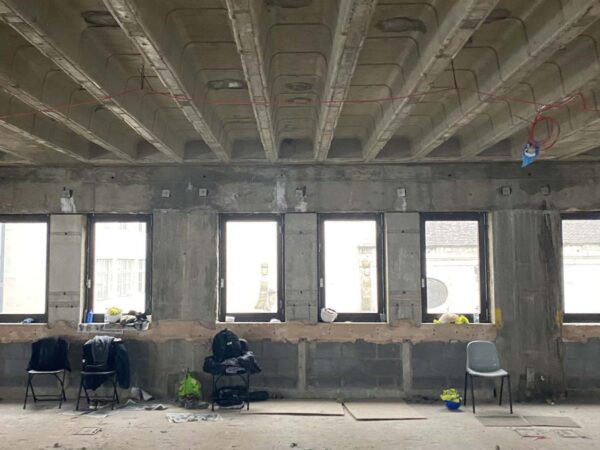

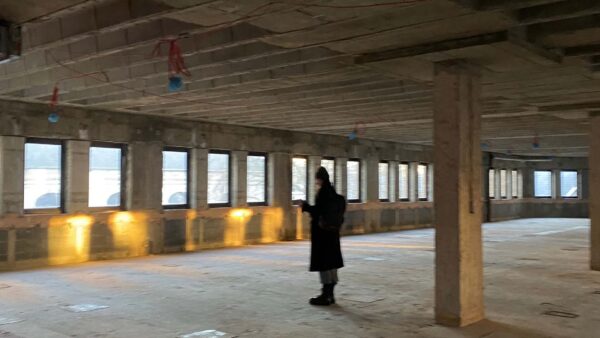
06 Context
An excellent example of sustainable principles
Sustainability has been a key driver within the brief. We have provided environmental upgrades to the existing fabric and have aimed for sustainable changes falling under several catagories such as circular economy, operational carbon, environmental certification, water efficiency, ecology, sustainable transport, pollution and health and well-being.
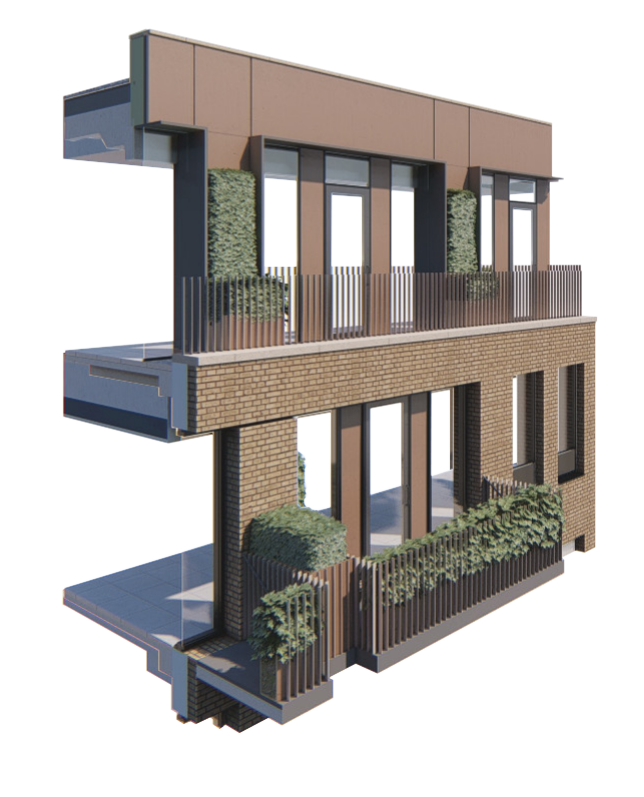
This allowed the project to target ambitious environmental goals such as BREEAM Excellent, WELL Gold and NABERS 4.5 stars. These certifications necessitated many stringent requirements and standards, which we have worked through meticulously with the design team in order to achieve the projects sustainability aspirations.
For example, at St. Bride’s House, DLA created a lounge in the basement that includes a bookable class room (for tenants and the community), nursing facilities and a best-in-class end of trip facility with a RiRo (roll-in-roll-out) cycle hub, drying and towel service and a high-end, sports-club aesthetic. This looks great, creates a USP for marketing the building but critically hits a range of credits across multiple accreditations simultaneously.
This is a demonstrates DLA’s user-focused design ethos, which is underpinned by a holistic approach to wellness, sustainability and technology, ensuring a fantastic and marketable experience for tenants whilst sweating every aspect of investment.
- 1/4 RiRo (roll in roll out) cycle storage access
- 2/4 End of trip facilities such as combined shower changing rooms, drying room, WCs, water station and towel service
- 3/4 Direct access to upper floors
- 4/4 Well facilities, such as bookable activity room, nursing room, WC and dedicated lockers. Accessible from reception or upper floors.
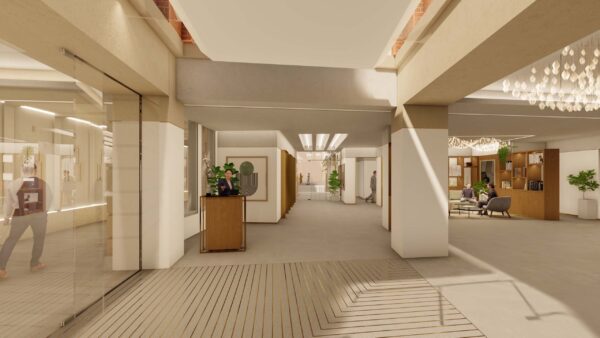
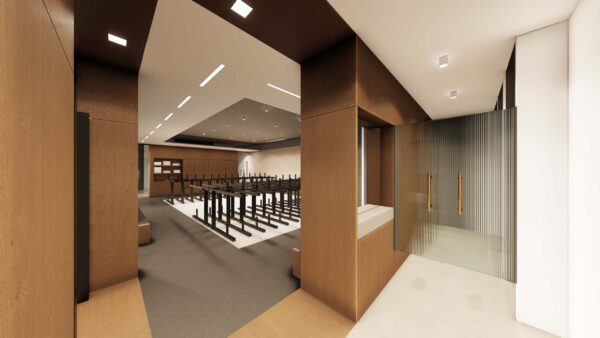
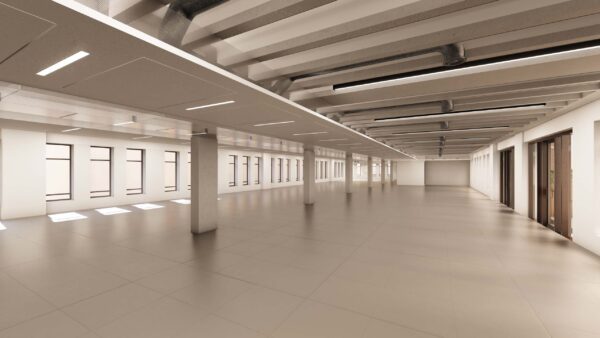

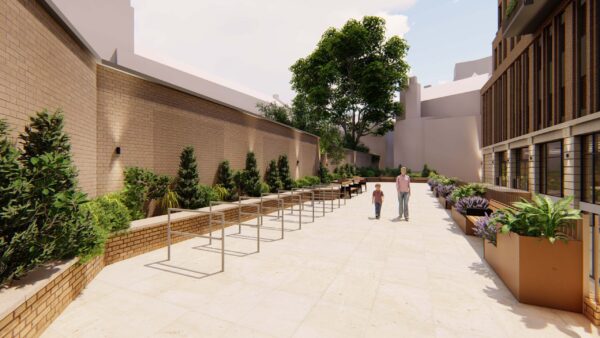
07 Passionate About Delivery
Navigating an existing fabric
We have faced two key challenges in the design development involving the existing building. Firstly, a tenant remaining in situ. This presented potential problems that required workable solutions, including phasing, access, sanitation, and power. Working closely with the design team, we provided bespoke solutions to any concerns that arose throughout the design process.
Secondly, accurate existing building data was essential for successful delivery, a priority we take very seriously. An accurate survey is crucial when working with existing structures. St. Brides House was initially surveyed while still occupied, necessitating assumptions. We therefore undertook a second Survey after the strip-out and re-validated our model. A point cloud scan was conducted, providing laser-accurate results.
Our role in the project has included coordinating the Revit model and integrating models and information from MEP and Structures. This allowed for continuous assessment of potential clashes and spatial fit, ensuring issues were addressed before reaching the site. We also engaged with several suppliers and subcontractors during the tender process, validating design strategies to produce a holistic package of accurate information.
We will continue the meticulous and collaborative practices established during the tender phase as we move into the next stage.
08 Technology and Innovation
Celebrating the Existing Structure
St. Bride’s House is constructed with an in-situ concrete frame and coffered slabs. To highlight this interesting structural feature, we propose exposing the concrete coffered slabs. Ensuring the suitability of revealing these long-hidden coffers has required several steps, primarily focusing on fire safety. The thinnest depth of the coffers does not provide sufficient fire protection, and we were concerned about the positioning of the metal reinforcement within. Committed to delivering safe buildings, we collaborated with a specialist supplier during the design stage to conduct ferroscans of the structure. This determined the position and amount of reinforcement in the slab, enabling us to use special intumescent paint protection and successfully reveal the concrete coffers.
A further interesting feature of St. Brides is the gatehouses facing Salisbury Square. Development of the building in the 1980’s infilled the space behind the gatehouses to create the current footprint. To enhance the reception experience, we created a small glass atrium at ground level, revealing this space and reconnecting the two gatehouses, whilst respecting the heritage context.
Today, in-use technology is a large part of the offering for a new building to tenants and St. Bride’s is no exception. On completion, St. Brides House will feature screens within the end-of-trip facilities and reception that relays live information on trains, travel times etc. Occupants of the building will also have access to a phone application that enables them to interact with the building such as reserve the bookable room, use lockers etc. Climate control is also managed digitally, with on-floor CO2 sensors, that can control the mechanical ventilation.
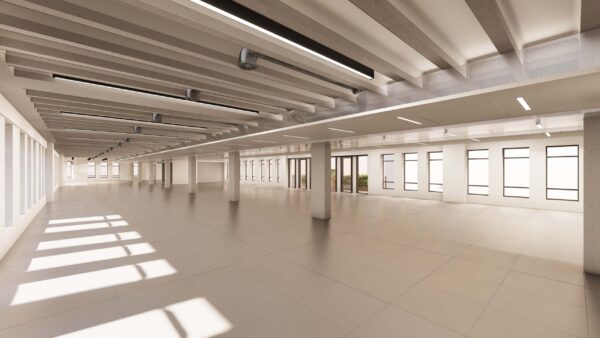
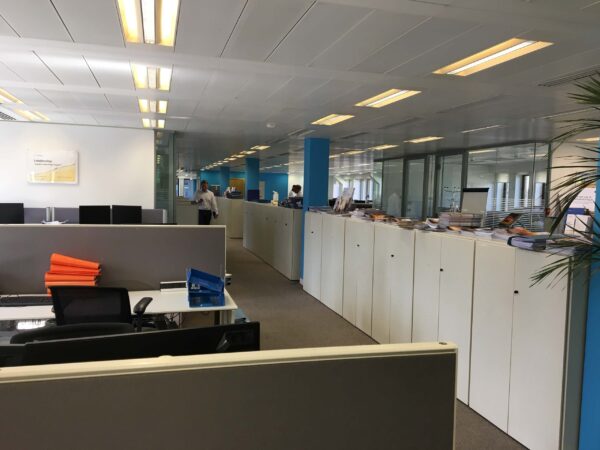
Before and after of an office floor
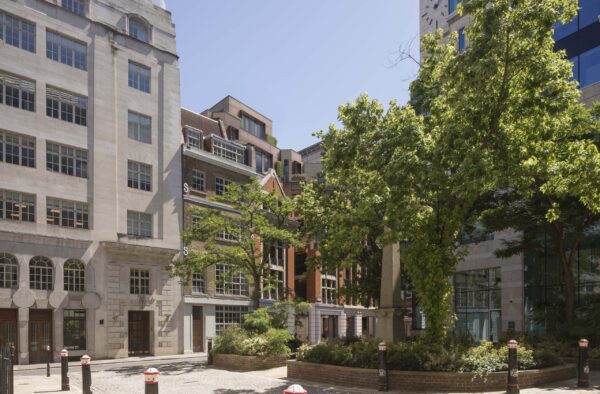
09 Collaborators
DWS – Client
CBRE – Project Managers
Bigham Anderson Partnership – Quantity Surveyors
Perega – Structural Engineering
GDMP – MEP Engineering
Gerald Eve – Planning
Donald Insall Associates – Heritage
Twin & Earth – Sustainability
Semper – Fire Engineering
Caneparo – Transport
Salus – Building Control
GIA – Daylight / Sunlight / Rights of Light
CBRE PD – CDM Principle Designer
Project team
